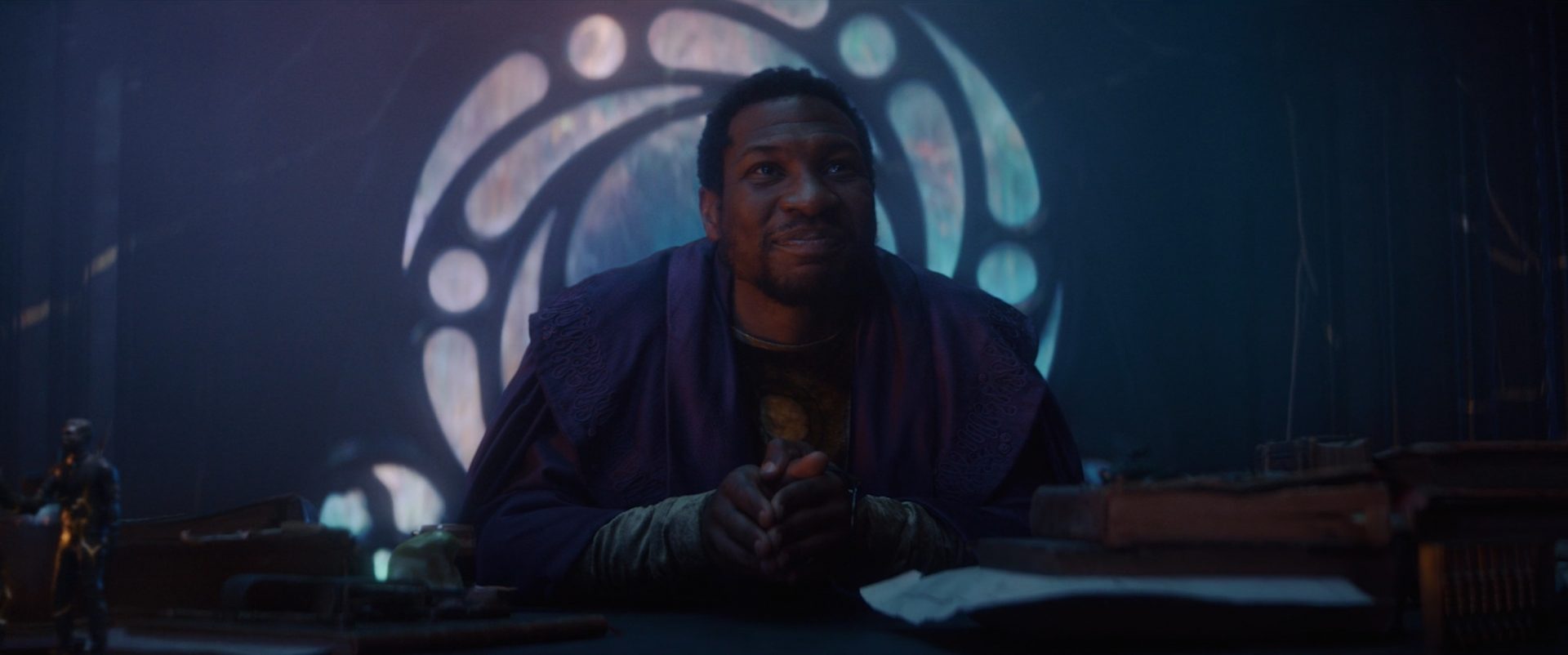He Who Remains told Loki and Sylvie that he had lived a million lifetimes. During his eons of existence, he’s accumulated many items from across space and time. With the many different items to choose from of all realities, each chosen trinket has earned a place in his home beyond the end of time. Every piece of furniture, book, collectible, statue and shattered remnant at the Citadel told us something about the TVA’s secret ruler. Now thanks to Loki‘s production designer we know exactly what some of those elements really had to say.
Kasra Farahani spoke to Vanity Fair about building Loki‘s last set. He Who Remains resides in a castle, atop a floating asteroid, in a dimension outside of time. For that, the show drew inspiration from Jordan’s iconic Petra. Like Petra, He Who Remains chiseled the Citadel from the rock it calls home. Jordan’s landmark has stood for thousands of years. In fact, so has He Who Remains home. The Citadel stands as an immovable symbol of power. Just with what Farahani calls a more “flashy” Gothic revival style than that of Petra. The building borrows from multiple European castle styles, which influences the feeling that He Who Remains is both timeless and all powerful.
The size and scope of the Citadel also draw inspiration from a much more recent source. It hearkens back to magazine magnate William Randolph Hearst, who was the inspiration for Citizen Kane. The powerful publisher also built his own castle by borrowing from multiple old European styles. Why select from just one when you can have everything?
But the Citadel also reflects the similarities of both Hearst and He Who Remains.
Hearst Castle and Kane’s fictional equivalent Xanadu served as the base for powerful figures who lorded over their realms from high atop their extravagant kingdoms. Like Kane, dying in his home, Farahani says He Who Remains also retreated to his lair.
 Marvel
Marvel
(Don’t worry. Farahani says we’ll eventually get an answer over the identity of the unseen fourth Time Keeper, whose statue laid shattered on the Citadel’s floor.)
The Citadel was not designed to just be a monument to its ruler. It was also designed to serve as a monument to the domain he rules: time. The many engravings and props found throughout the building call attention to He Who Remains’ authority over all of existence. Combined with others elements intentionally “more unknowable and fantasy” related, as well as “a unique cocktail of this obscure time-related and philosophy-related obscura” on his desk, the combined effect is a grandiose warning to anyone who enters that a powerful man lives there. This being is unlike any others. You can’t know him for he is unknowable. All the more reason to fear him.
 Marvel
Marvel
And yet, the most unnerving element of the entire set is the dust and decay found throughout. His atrium, with the destroyed statue of the Time Keepers, showed how he had turned away from the timeline leaving his home in “disrepair.”
The man controlling the lives of every being, everyone who has or will ever exist, has long kept himself hidden away. He holed up in his castle many, many centuries ago. And any ruler who forgets what it’s like to live among his kingdom is one who can forget what it means to truly be alive.
